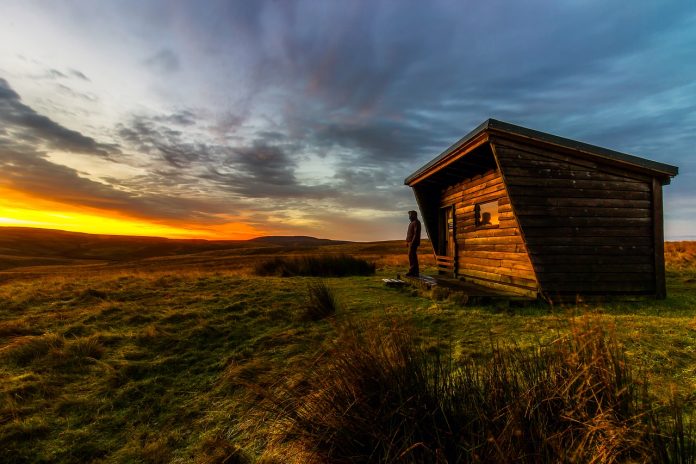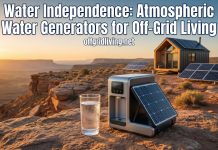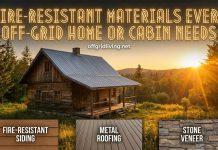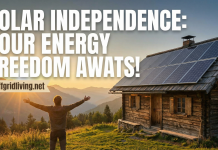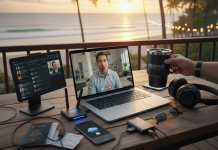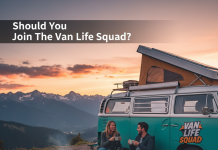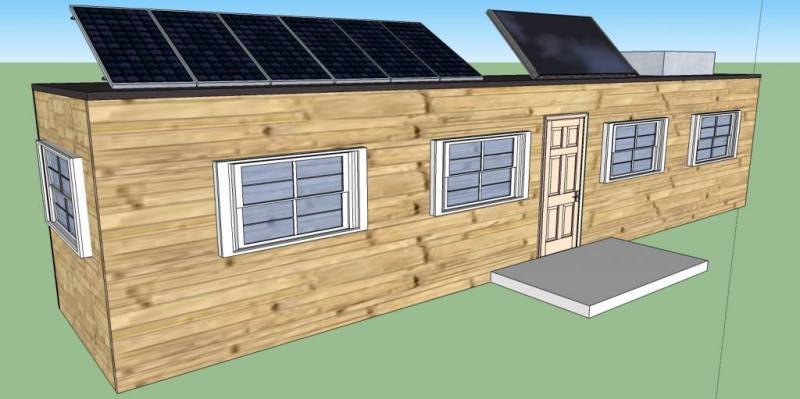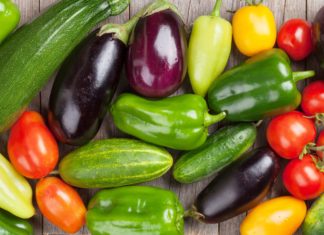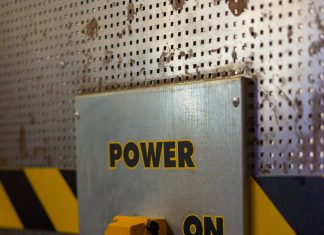How To Be Ready For the Pandemic: Emergency Preparedness Survival Kit Checklist! Here is a list of survival gear items you need to survive the pandemic apocalypse. This list will help you survive any survival scenario and teach you How to Build a Bug Out Bag. You will need these emergency supplies and survival gear to survive a month or more during a short term survival scenario. A long term survival situation requires the same gear, plus some long term food supplies, tools and equipment for water storage and electricity. This includes seeds and dry goods, freeze dried foods, dehydrated foods, climate controlled storage systems, water filtration and purification system and storage.
Coronavirus Survival Kit Checklist: COVID-19 is a global pandemic. The CDC and WHO have posted information about the virus and it’s spread on their websites for more information go to their website.
This is a real-world no BS emergency survival kit list compiled by an outdoorsman and survivalist with 40+ years of survival experience. This information will help keep you and your family alive during the pandemic.
COVID-19 is a serious issue and it should be treated as such. This information is not to cause panic or scare people. Having said this, it is a scary situation! This is real! This is no joke. It’s a serious pandemic and people need to take this seriously.
Below is a long list of emergency supplies and survival gear items that you will need to survive the short term and the long term. This list will be updated as we have more information.
Emergency Supplies Survival Kit Checklist!
Put together a kit for each family member. This way you have backups of important equipment and supplies just in case a kit or piece of gear is lost.
- BackPack (ALICE Pack or Tactical Combat Pack with PALS webbing for MOLLE attachments)
- Guns & Ammo – There are lots of Online Precision Tactical Rifles for Sale out there. You will want to consider buying shotgun, rifle and handgun plus 100 rounds of ammo each. Enhance your rifle with Ozark’s precision ACOG scopes, perfect for long-range. Do browse this site to buy at the best price and quality.
- Knife – Bushcraft (fixed blade) – A good quality survival knife and a pocket knife for every day carry (EDC).
- Pocket Knife – A good quality folding pocket knife made by a reputable manufacturer.
- MultiTool – Leatherman or Gerber multitool. Has valuable tools you need to carry on you at all times.
- Axe – A good 18-24″ camp axe
- Machete – A machete for for cutting branches and small brush, clearing your camp of underbrush and blazing a trail.
- FireStarter – Ferro rod, lighter, matches, and know how to build a friction fire.
- Paracord – Military 550 cord. Cordage is an absolute necessity.
- LED Flashlight & Headlight – Rechargeable
- Backup Battery Lithium Ion With Mini USB –
- Portable Solar Panel – For charging your devices when the power goes out. Blackouts happen. Plan for it.
- Crossbow pistol – For hunting small game silently! And killing those pesky zombies.
- Fishing rod/reel combo – For catching fish for food.
- Fishing tackle – A simply fishing tackle box filled with popular lures, hooks, weights and extra fishing line.
- Tent (this is a luxury – family) – Get a medium sized tent that’s large enough for family, but small enough and light enough to carry.
- Sleeping bag (0 to 20 degree bag) – This will keep you warm in just about any climate.
- Wool blanket – Will keep you warm even when wet.
- Sleeping pad/Insulated – This is a necessity to insulate yourself from the ground. The ground will pull the heat form your body. Insulate yourself.
- Canteen – Get a good plastic canteen. A plastic water bottle will work short term, but ideally you will want a military style canteen or stainless steel water bottle.
- Duct tape – For fixing anything. Including holes in your tent or tarp. It can also be used in an emergency scenario as first aid tape.
- Candles
- Flashlight
- Extra Batteries
- Battery Power Hand Crank Radio (weather radio)
- Maps – Internet might go out, cell phones may not work.
- M95 Surgical Mask
WATER PURIFICATION FILTRATION & STORAGE:
- Water Purification Tablets, Bleach in a small dropper bottle – A few drops of chlorine bleach per gallon of water, stir/shake/mix, then let it sit for an hour in the sun, then boil, and filter.
- Water Filter – Sawyer makes good portable water filters. Lifestraw is a good filter as well. Bund Lining Systems offer affordable bund lining prices so everyone can prevent their water being contaminated.
- Water Bottle – Stainless Steel – (Single walled! Don’t get the insulated kind; they are worthless for survival/emergency scenarios) – You need a good stainless steel water bottle for carrying and boiling water. Don’t get the double-walled insulated water bottle because you can’t put it in the fire to boil water. It’s vacuum sealed and insulated and poses a safety hazard if heated. Get a single-walled uninsulated stainless steel or titanium water bottle that holds at least 16-24 ounces of water. A 1 liter bottle is good!
SURVIVAL COOKING & HEAT:
- Stainless Steel or Titanium Pots/Pans & Utensils –
- Wood Stove Camp Stove – Portable lightweight wood stove (with exhaust vent) for heating and cooking inside the tent/tipi. VENTILATE YOUR TENT! Keep good ventilation so you don’t kill yourself with carbon monoxide poisoning.
- Propane Heater/Stove – A propane stove or heater is for short term survival because fuel is a finite source of energy, but it will do in an emergency survival situation. Don’t depend on it for long term survival!
- Extra Blankets Quilts and Sleeping Bags –
CLOTHING:
- Waterproof Boots – Protect your feet! Good insulated waterproof boots are an absolute necessity!
- Packable RainGear Outer Shell – This will go over your other jacket/coat if it rains.
- Poncho – This will double as a tent if you need an emergency shelter!
- Extra Nylon Tarp – For emergency shelter.
- Cold Weather Coat – Large heavy weight coat for extreme cold.
- Jacket – Medium/lightweight jacket or hoodie. Cotton is NOT good if it gets wet!
- Thermal Base Layer – A necessity in cold weather.
- T-shirt – Extra tshirts for everyone in your family/group.
- Underwear – Extra underwear for everyone.
- Gloves (cold weather and leather) – Have leather utility gloves for working and cold weather gloves for extreme cold if you’re in the northern hemisphere.
HEALTH & NUTRITION:
- Multi Vitamins – To supplement your diet
- Vitamin C
- Fish Oil Capsules
- Medications – Prescriptions, supplements, etc.
First Aid Kit & Emergency Medical Supplies
First Aid Kit – Military Style
- Baid-Aids
- Bandages
- Sutures
- Tourniquet
- Gauze pads
- Cloth tape
- Wound dressing/bandage
- Nitrile Glove
- Medical Masks
- EMT Shears
- Trauma pad
- Hemostats
- Forceps
- Tweezers
- Scalpel
- Small syringe with spare needle
- Alcohol swabs
- Antibiotic ointment/neosporin
- Aspirin
- Ibuprofen
- Allergy meds
- Mylar space blanket
SURVIVAL FOOD:
Buy in bulk! Save money. This is going to sounds harsh, but it needs to be said. Don’t be a selfish jerk by buying everything a store has in stock. Be considerate of other families. That extra food that you take could be taking food out of a child’s mouth! Don’t take food from kids! Don’t be selfish!
Also, buying everything on the shelves puts undo stress on the food supply chain and too many people grabbing up all the food could cause the food supply to collapse.
By taking too much you are endangering your family long term! Think ahead. Take only what you NEED.
Be considerate. Think of others too! That extra food you take will stress the food system and if it break you will have none! Think ahead!
- MREs, Dehydrated Foods, Freeze Dried Food!
- Flour –
- Sugar
- Rice
- Beans
- Pasta
- Tea
- Coffee
- Dehydrated Powdered Milk
- Powdered Eggs
- Chicken Bullion
- Beef Bullion
- Salt Pepper Garlic
LONG TERM SURVIVAL:
Food water and power are essential for long term survival. Here is a list of what you will need for a more long term scenario. The goal is to be 100% self sufficient and sustainable.
- MREs, Dehydrated Foods, Freeze Dried Food! (emergency rations). Make use of MRE meals provide a convenient and nutritionally balanced solution for individuals in emergency situations or military operations, offering a quick and efficient source of sustenance with a long shelf life.
- Seeds! – For planting long term survival food. You can grow your own food in your home in planters and in your garage. In the event the food supply dries up or the supply chain breaks you will need a plan for long term survival food! Growing your own food sounds silly, but long term survival requires it. Long term means anything longer than 3 months. It takes 2-3 months for food to grow before harvesting. Growing indoors allows you to control the climate. Grow lights speeds up the process.
- LED Grow Lights – UV and full spectrum white LED lighting. Helps you control the amount of light your plants receive and gives you the ability to grow indoors in a climate controlled environment.
- Solar Panels – 1500 Watt minimum for a family of 4 with no large appliances. 2k to 3k Watt system is better for long term power when combined with a battery backup energy storage system.
- Wind Turbine – Supplements your power needs for when the sun isn’t shining. You won’t be able to run your entire home on a single wind turbine unless it’s very large, but a 500 Watt or 1000 Watt wind turbine will funnel energy into your battery system for later use and you can run some small devices directly from the power generated by the wind turbine.
- Battery Backup Energy Storage – So you have power at night! A good battery backup when rationed can last days or even weeks if you’re not running large appliances and only charging small mobile devices. The battery system is a must-have for any solar/wind power system. It allows you to store backup energy for use when you need it most.
- Food Dehydrator – You can use your oven on a low/warm setting around 200 degrees F to dehydrate food like beef jerky and to make full meals for storage and later use.
- Vacuum Sealer – Another-must have for long term food storage. Buy a good one and use it to vacuum seal your dehydrates foods.
- Freeze Dryer (if you can afford it) – This is an extra and will help you in stocking up large quantities of food. Freeze dried food tend to last longer than dehydrated food.
- 5 gallon buckets with lids – For food storage and transport. They stack well and will keep your food fresh longer. Especially when the food is vacuum sealed in mylar and plastic bags.
- Mylar bags – For storing food in airtight containers.
- Plastic Bags – For storing food in airtight containers.
- Desiccant – A small desiccant pack will keep moisture from ruining your food when place inside the plastic or mylar bag and then vacuum sealed.
- Mason Jars – For canning and preserving food for short to long term use. (months to a year or more depending on the food item) Look up canning and preserving food on the USDA website and Ready.gov, plus there are many other blogs and websites and Youtube with tons of information on how to can and preserve your own food for long term storage.
- Pressure Cooker – Buy a large pressure cooker for canning and preserving your own food if you don’t already have one. Get a couple few of them if you have lots of food to process.
- Large Aluminum or Stainless Steel Pots – For cooking large bulk meals to freeze dry or dehydrate! The larger the better. You can cook large pots of food and then dehydrate and freezedry many full meals that will last a long time on your shelves stored in a cool dry place.
COMMUNICATIONS:
- Smart Phone – Personal communication and for emergencies, news and information.
- Computer – Email and Messenger, Facebook, Twitter, News and information
- CB Radio – And old fashioned CB radio is a great way to communicate with members of your local community. It’s a necessity when and if cell towers go down and we lose internet and cellphone communications.
- Short Wave – Small hand held radios give you the option of some added privacy, but keep in mind others within range of your signal can listen on the same channel.
- HAM Radio – You need a license to be a HAM radio operator during normal times, but in an emergency scenario HAM could come in handy.
The smaller items go in your Bug out bag!
We’ll be updating this list of supplies often so bookmark this page and share with your family and friends!
Thanks for reading!
***


